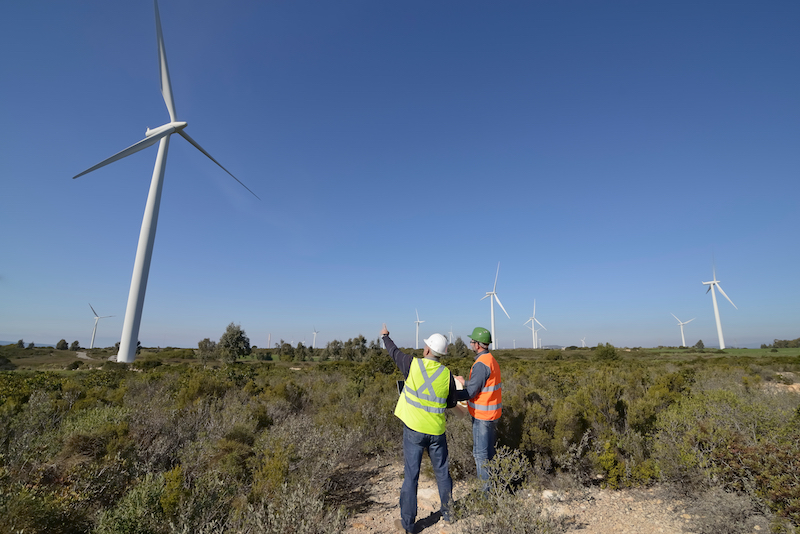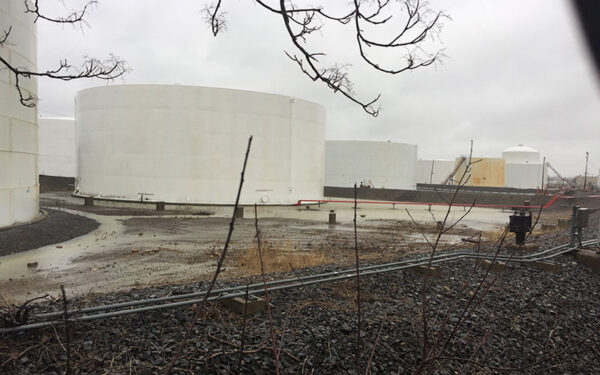
Increasing the Renewable Portfolio Standard in each New England state will add tens of thousands of jobs to the region. Photo: Shutterstock.
Renewable Portfolio Standard Basics
- A Renewable Portfolio Standard (RPS) is a state policy that requires electric utilities like Eversource and Central Maine Power to get a specified amount of their electricity from clean resources, such as wind and solar, by a certain year. In many cases, this amount is then set to increase year over year.
- For example, in New Hampshire, utilities are required to buy just over 20% of their electricity from clean energy sources by 2020, with at least half of that coming from specific new renewable energy sources. This total requirement then increases by roughly 1% every year until reaching 25% by 2025.
- These policies can help states move away from climate-damaging fossil fuels while promoting the growth of a new clean energy economy. They’ve proven successful in helping states lower greenhouse gas emissions.
- Increasing the RPS in each New England state will add tens of thousands of jobs to the region, buffer home and business owners from volatile gas prices, and cut climate-polluting emissions significantly.
What Is a Renewable Portfolio Standard?
Renewable Portfolio Standards (RPS) are a way for states to ensure their electric utilities – and by extension, the states themselves – are making progress on clean energy. It’s a policy that requires a state, and by extension its utilities, to get a certain amount of its power from renewables by a specific year, which helps all of us cut our harmful greenhouse gas emissions. Additionally, a strong RPS helps kickstart clean energy development, which adds good jobs and spurs further investment in renewable energy projects.
Each state sets its own RPS and decides what types of renewable energy can be counted towards this target. For example, solar and wind energy are almost always considered renewable, but hydro power and biomass only count as renewable resources if they come from certain types of sustainable facilities.
What Makes a Good Renewable Portfolio Standard?
The best RPS policies heavily emphasize clean renewables like wind and solar, and force less clean resources like biomass to meet standards that improve their efficiency and sustainability.
Resources like biomass or waste incineration are often touted as clean but can actually be polluting and environmentally damaging. For example, burning wood to make electricity is inefficient, pollutes the air, and leave us with fewer trees to sequester carbon. Burning waste not only pollutes our air and water, it also creates a disincentivize for our cities, towns, and local companies to reduce waste and increase recycling to feed the waste incinerator beast.
An RPS can be an effective tool for combatting climate change – but only if the standard encompasses zero-emission resources. If states want their RPS policies to truly clean up our grid, improve air quality, and help fight climate change, it’s essential that they carefully define which resources are included.
Which States Have Renewable Portfolio Standards?
Twenty-nine states plus D.C. have passed a version of this law, including every state in New England. The targets range from modest – Rhode Island has to reach a total of 38.5% renewables by 2035 – to ambitious – Maine passed legislation that sets its target at 80% by 2030 and 100% by 2050.
As you can see, New England has a few different mandates – and many of them include evolving targets. For example, Massachusetts’s RPS requires a yearly increase of 2% from now through 2030 to drive rapid emissions reductions, until new clean energy resources make up 35% of its energy. After that it drops down to a 1% increase every year. Vermont is a bit more straightforward, working towards 75% renewable energy by 2032.
Generally, states have met their RPS targets and increasing amounts of clean energy has been added to our electricity grid. Each of these goals has helped its state diversify its energy sources and be less dependent on polluting fossil fuels like coal, oil, and gas. This helps drive down energy prices overall and encourages the development of new industries and local jobs.
The Future of Renewable Portfolio Standards in New England
Given the potentially enormous benefits of Renewable Portfolio Standards, it’s important to expand them. We know they work – they bring good, local jobs to the region and reduce climate-damaging emissions. By increasing the percentage of renewables in the energy mix every year and ensuring those resources are clean, we’ll only see more benefits.
In fact, a 2017 report showed that in Massachusetts, the RPS and other policies that support it successfully created clean energy jobs, tax revenue for the state, and more stable electricity prices. (Essentially, Renewable Portfolio Standards can help insulate us from volatile gas prices.) The report also explained that further increasing the Commonwealth’s yearly RPS requirement would drive up new investment in renewable energy, drive down wholesale electricity prices, and ensure there is enough clean energy to meet demand.
As a region – and as a country – we need to forge ahead with strong Renewable Portfolio Standards. As a New England resident, you can make a difference: show your support for Renewable Portfolio Standards by attending hearings, writing and calling your legislators, and signing up for our email action alerts so you’ll know when you can make your voice heard in support of bills aimed at increasing your state’s RPS.



